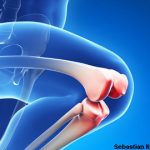ATLANTA—Advances in shoulder arthroplasty have extended what surgeons can offer patients suffering from shoulder pain. Those advances have, in turn, driven refinements in rehabilitation protocols. In a session titled, “Total Shoulder Arthroplasty and Reverse Total Shoulder Arthroplasty: Surgery and Rehabilitation,” here at the 2010 ACR/ARHP Annual Scientific Meeting, an orthopedic shoulder specialist and a physical therapist partnered to discuss the integrated approach to shoulder repair and rehabilitation. [Editor’s note: This session was recorded and is available via ACR SessionSelect at www.rheumatology.org.] Clear communication between surgeon, patient, and physical therapist is key for successful outcomes following shoulder joint replacement, said the two presenters.
Conventional Total Shoulder Arthroplasty
Although shoulder replacements are done for a variety of reasons (including avascular necrosis, fracture, and dislocation), the most common indication is osteoarthritis, said Scott D. Pennington, MD, an orthopedic surgeon in private practice at Peachtree Orthopaedic Clinic in Atlanta. Total shoulder arthroplasty (TSA), “has a really good track record for OA, with 90% good to excellent results,” he remarked. Surgery is usually considered after a patient fails a course of conservative management, consisting of corticosteroid injections, antiinflammatories, and physical therapy. Evaluation includes a physical exam, X-rays, assessment of function, and range of motion.
In their conversations with patients, surgeons should discuss realistic outcomes, Dr. Pennington noted. “The main and best reason for total shoulder arthroplasty is to eliminate the patient’s pain. Functional results are somewhat variable, and patients need to know that they’re not going to get 170° of forward flexion. Their days of changing light bulbs may be over. But, if they can touch the top of their heads, eat by themselves, and are pain free, that’s a home run.” Patients with rheumatoid arthritis can expect to achieve 75 to 100° of forward flexion (as opposed to 130–145° of forward flexion for OA patients). Their results may deteriorate over time because of the systemic nature of their disease. Still, TSA “is still a very good pain-relieving operation” for this population as well, according to Dr. Pennington.
Dr. Pennington then outlined the procedure. Surgeons typically use a deltopectoral surgical approach under an interscalene block. The third-generation TSA prosthetics allow surgeons to restore the patient’s normal shoulder anatomy. Dr. Pennington emphasized the importance of dictating the operative note, which details the type of surgical approach and the expected range of motion limits. This ensures that the physical therapist will not “try to take the patient beyond the [range of motion] allowed.”
All good rehab programs depend on communication between the surgeon, inpatient nursing staff, and all of the therapists.
—Victoria Gall, PT, MEd


